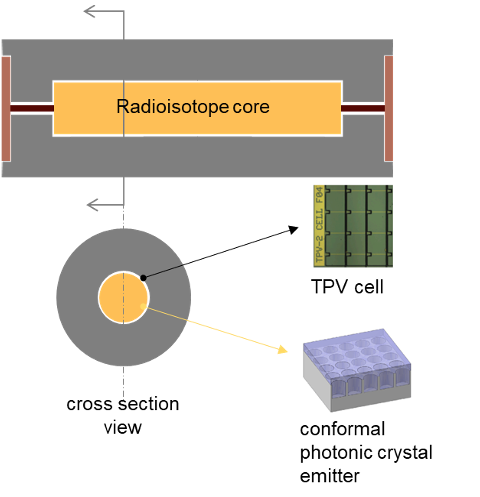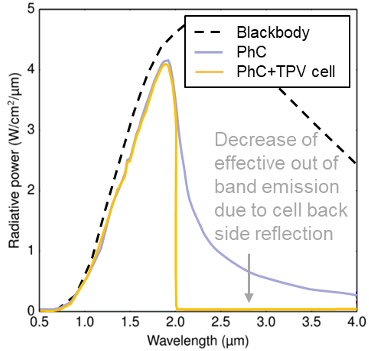High-Energy-Density Photon Sources With Designer Emissivities
Small-scale power sources in the range of 0.1 Watts to 100s of Watts with extreme energy densities remain elusive. Power sources that significantly exceed 105 Wh/kg (current batteries are typically on the order of 102 Wh/kg) at millimeter scales could completely revolutionize remote sensing, remote data gathering/processing, small robotic platforms, underwater unmanned vehicles (UUVs), and more. In this project, building on previous ISN research that set multiple energy and power density records for mesoscale hydrocarbon-fueled thermophotovoltaic (TPV) generators, the Celanovic and Fisher research groups will seek to design and demonstrate a record performance, extreme energy density mesoscale radioisotope-fueled TPV (RTPV) power source that will take full advantage of the up to six orders of magnitude larger energy density of certain radioisotopes compared to standard battery chemistries. They propose to develop a novel RTPV architecture using thin-film conformal TPV cells with a highly reflective backside mirror and an extreme view-factor thermal cavity based on cylindrical coaxial architecture, and the first-of-its-kind conformal metallo-dielectric high-temperature photonic crystal selective emitter.

Schematic coaxial cylindrical geometry RTPV: radioisotope material embedded in the inner cylinder core (emitter) heats a photonic crystal to incandescence and the resulting thermal radiation drives low bandgap PV cells.

The photonic crystal enables high efficiency by enhancing in-band thermal radiation and suppressing out-of-band radiation.

